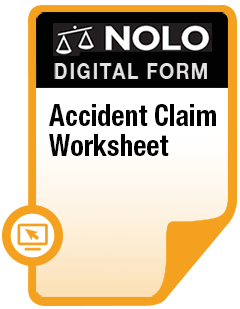Many (but not all) maritime industry workers qualify for on-the-job injury protection under the Jones Act.
The Jones Act is a federal law that gives certain maritime industry employees— people who work on or around bodies of water—a fairly broad right to sue their employer for injuries that occur on the job. But a worker needs to qualify as a "seaman" in order for the Jones Act protections and injury claim process to apply. The "seaman status" analysis is the focus of this article. (Get the basics of the Jones Act and how it works.)
What Is a Jones Act "Seaman"?
The "Jones Act" is a law that has been around for more than 100 years, meant to protect vessel crewmembers and other seamen who have been injured on the job. Over the years, courts have figured out that for purposes of the Jones Act, a seaman is someone who:
- contributes to the mission or operation of a vessel almost any kind of ship or boat) or an identifiable group of vessels that are "in navigation", and
- has an employment-related connection to the vessel (or identifiable group of vessels) that was substantial in terms of both "duration" and "nature".
According to well-established rules handed down by federal courts, there isn't really a "snapshot" test that can be used to figure out who is (and is not) a seaman entitled to Jones Act protections. Instead, a plaintiff's seaman status must be determined in the context of their "overall employment" with the employer.
Let's take a closer look at what some of these elements that may (or may not) indicate "seaman" status.
The "Vessel In Navigation" Requirement
A vessel "in navigation" is a special legal term. Basically, it means that the vessel has to be:
- afloat
- in operation
- capable of moving, and
- on navigable waters.
The vessel doesn't actually have to be moving or at sea in order for someone to qualify as a seaman. The vessel simply has to be capable of moving under its own power (or being sailed, if it relies on sails). A vessel "in navigation" can be tied up at a dock or mooring, but a vessel "in navigation" can't be in a drydock or out of the water up on blocks.
What Are "Navigable Waters" Under the Jones Act?
"Navigable waters" is another special legal term that means waters (i.e., a river or lake) that are capable of being used for interstate or foreign commerce.
The ocean and all waters that are connected directly to it are navigable waters, but landlocked lakes can also qualify, as long as they either extend into another state or are connected to a river that flows into another state.
Examples of the "Vessel In Navigation" Analysis
Let's look at a couple of examples of what are not considered vessels "in navigation" under the Jones Act.
First, what about an oil drilling platform? While a drilling platform might be able to float and be used as a barge, it is not afloat. An oil drilling platform is permanently anchored to the bottom of the ocean, so it's not considered to be a vessel in navigation.
Another type of vessel that may not technically be a vessel "in navigation" is a newly built vessel that is still undergoing sea trials to make sure that it's ready for delivery to the owner. It's in the ocean and sailing around, but it's not actually in commercial operation. So, it's not considered to be a vessel "in navigation."
What about floating casino barges. Some states require casinos to be afloat, but don't actually require them to sail around a lake or the ocean. So some floating casinos do nothing more than float in man-made ponds. This is a very complicated legal issue. If you were injured while working on a floating casino, you should contact a maritime personal injury lawyer to find out if your floating casino qualifies as a vessel in navigation.
The "Contribute to the Mission or Operation of a Vessel" Requirement
This is a very broad requirement. A seaman "contributes to the mission or operation of a vessel" if their work adds to the accomplishment of the vessel's mission. It's difficult to conceive of a vessel crew member who doesn't contribute to the accomplishment of the vessel's mission. About the only type of maritime employee who might find themselves on a vessel and not be contributing to the accomplishment of the vessel's mission might be a member of the vessel owner's administrative support staff who, for some reason, is on the vessel during one of its trips.
The "Substantial Duration" Requirement
This is a trickier requirement—you might say that maritime lawyers spend a "substantial" amount of their time arguing this issue.
In general, in order to qualify as a seaman, at least 30% of the employee's total employment time must be spent on a vessel or on a specific fleet of vessels. Let's look at a couple of examples to get a better idea of who qualifies as a seaman.
Let's say that a licensed seaman generally works in their company's office managing the company's fleet of tankers, but that, once a year, they take a one week trip on one of the tankers. That person is clearly not a seaman. But let's say that the person works 60% of the time in the office, 25% of the time on vessel A, and 15% of the time of vessel B, and that both vessels are owned by their employer. Because the two vessels will generally be considered to be a "fleet" of vessels, if that person gets hurt while working on one of the vessels, they will likely qualify as a seaman because they work at least 30% of the time on a specific fleet of vessels.
Next Steps For an Injured Seaman
If you're a crewmember who has been injured onboard a vessel, your best first step is to make sure you report the incident to your captain or shipmaster. Next, make sure you get proper medical care for your injuries.
You might be able to handle a Jones Act claim yourself, if you feel you can stick with it until you get a fair result. Learn more about the Jones Act Claim Process.
But if you run into any roadblocks, or if you're just not in a position to handle things on you own, it might make sense to discuss your situation (and your options) with an experienced legal professional. Learn more about getting help from an injury lawyer.
Talk to a Lawyer
Need a lawyer? Start here.
How it Works
- Briefly tell us about your case
- Provide your contact information
- Choose attorneys to contact you
- Briefly tell us about your case
- Provide your contact information
- Choose attorneys to contact you


